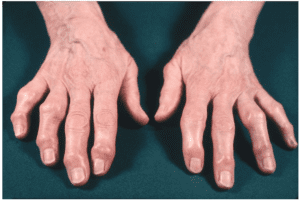Signs and Symptoms of Osteoarthritis: Recognizing Early Indicators
Osteoarthritis (OA) is a degenerative joint disease that affects millions of people worldwide, leading to pain, stiffness, and reduced mobility in the affected joints. The signs and symptoms of osteoarthritis can vary depending on the affected joint, but there are some common indicators that help in identifying the condition early.

Early Signs of Osteoarthritis
The early signs of osteoarthritis are often subtle and can be mistaken for other joint issues. However, recognizing these symptoms early can help in managing the condition more effectively.
Common Early Symptoms:
- Pain after Activity: Mild pain that occurs after activity and goes away with rest. This pain typically worsens as the disease progresses.
- Stiffness: People may feel stiffness in the affected joint after periods of inactivity or in the morning after waking up.
- Limited Range of Motion: As the joint begins to lose flexibility, it becomes harder to move, and there may be discomfort when performing certain movements.
- Swelling: In some cases, inflammation may occur around the joint, leading to visible swelling.
Specific Signs of Osteoarthritis by Joint Type
Osteoarthritis can affect any joint in the body, but it most commonly targets weight-bearing joints like the knees, hips, hands, and spine.
Signs in Different Joints:
- Knee Osteoarthritis:
- Pain and stiffness, especially in the mornings or after prolonged periods of sitting.
- Swelling and fluid buildup in the knee joint.
- A grinding or creaking sensation (crepitus) when moving the knee.
- Hand Osteoarthritis:
- Formation of bony nodules (Heberden’s or Bouchard’s nodes) at the joints of the fingers.
- Pain, swelling, and difficulty gripping objects.
- Limited range of motion in the fingers and hands.
- Hip Osteoarthritis:
- Pain in the hip, groin, or thigh area.
- Decreased flexibility and difficulty with movements like squatting or climbing stairs.
- Pain that worsens with movement and improves with rest.
- Spine Osteoarthritis:
- Pain and stiffness in the lower back and neck.
- Reduced flexibility in the spine, leading to difficulty with bending or twisting motions.
Radiographic and Radiological Signs
X-rays and MRIs are important tools for diagnosing osteoarthritis. Radiographic and radiological signs are key indicators in understanding the severity of the condition.
Key Signs Seen on Imaging:
- Joint Space Narrowing: As the cartilage in the joint wears away, the space between bones decreases.
- Bone Spurs (Osteophytes): Bony growths that develop at the edges of the joint.
- Subchondral Sclerosis: Hardening of the bone beneath the cartilage, which can be seen on X-rays.
- Cysts: Fluid-filled sacs that may develop in the bone near the affected joint.
- Seagull Sign: A specific radiological sign seen in some cases of hip osteoarthritis.
Warning Signs of Osteoarthritis
While the progression of osteoarthritis is slow, there are warning signs that indicate the disease may be worsening, requiring more intensive intervention.
Warning Signs:
- Increasing Pain: The pain becomes more constant, and it may be difficult to manage with over-the-counter medications.
- Joint Deformity: As the cartilage breaks down, joint deformities may occur, especially in the hands and knees.
- Inability to Perform Daily Activities: Difficulty walking, climbing stairs, or gripping objects can indicate that the condition is affecting quality of life.
- Fatigue: Chronic pain and inflammation can lead to fatigue, which may affect overall health and mobility.
First Signs of Osteoarthritis
The first signs of osteoarthritis may be so mild that they are overlooked or attributed to aging or normal wear and tear. However, recognizing the early signs and seeking medical advice can help in preventing further joint damage.
First Signs May Include:
- Mild, intermittent pain in the joint after activity.
- Slight stiffness in the morning or after sitting for extended periods.
- A mild ache or tenderness in the joint, especially after exertion.
Importance of Early Diagnosis and Treatment
Early detection of osteoarthritis allows for better management of symptoms and may prevent the condition from progressing to more severe stages. Physical therapy, medication, weight management, and lifestyle changes like exercise can help maintain joint health and mobility. Using assistive devices like Curapod for pain management and muscle relaxation can provide immediate relief for osteoarthritis symptoms.
Recognizing the signs and symptoms of osteoarthritis early is crucial for managing the condition effectively. Whether you’re experiencing mild stiffness in your hands or persistent knee pain, identifying these symptoms early can help prevent long-term joint damage. Curapod can be a helpful addition to a treatment plan, providing non-invasive pain relief through electrical stimulation, helping to reduce inflammation and improve joint mobility. It can be used alongside other treatments to enhance the management of osteoarthritis, improving quality of life and reducing pain for affected individuals.
References
- Mayo Clinic, 2025. Osteoarthritis: Symptoms and Causes. Available at: https://www.mayoclinic.org/diseases-conditions/osteoarthritis/diagnosis-treatment/drc-20350418 [Accessed 28 February 2025].
- National Institute for Health and Care Excellence (NICE), 2025. Osteoarthritis: Management. Available at: https://www.nice.org.uk/guidance/ng59 [Accessed 28 February 2025].
- Arthritis Foundation, 2025. Osteoarthritis: Treatment and Relief. Available at: https://www.arthritis.org/diseases/osteoarthritis [Accessed 28 February 2025].
- Osteoarthritis Action, 2025. Osteoarthritis: Signs and Symptoms. Available at: https://oaaction.unc.edu/oa-module/oa-signs-and-symptoms/ [Accessed 28 February 2025].


